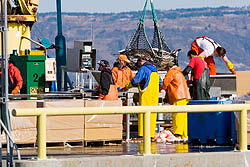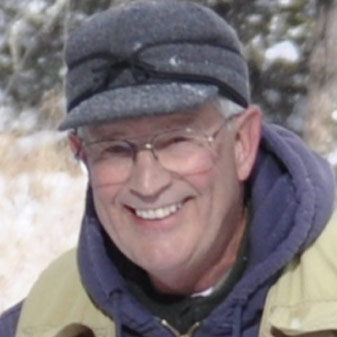A few hard tugs on my line prompted me to set the hook on the hungry fish. I remember the struggle I had reeling in the hefty halibut from a depth of 150 feet. The struggle was worth it—I packed home 30 pounds of delicious fillets and, of course, the delicacy of halibut “cheeks.” The halibut was not a monster by any means, especially compared to the 300-pound behemoth caught earlier in the week off the coast of Homer, Alaska. But counting the other three halibut my wife Sandy and I caught, we were happy with the fruits of our chartered fishing trip last year. The only “downer” was the warning by our skipper: “Enjoy today’s haul folks because next year’s regs may not allow as many halibut.”
For charter anglers off Juneau and the rest of southeast Alaska, the skipper’s warning proved true in early June of this year, when the harvest limit was exceeded in area 2C (see map, page 28) and the National Marine Fisheries Service cut the bag limit for a charter boat angler from two to one halibut per day. A temporary restraining order was issued by the U.S. District Court on June 20, lifting the one-fish-per-client daily limit and restoring it to two. The move may be only temporary, however. A group that includes commercial halibut fishers, subsistence fishers, two Alaskan coastal communities, a state legislator, and charter boat operators plans to intervene, concerned that restoring the daily bag limit to two fish will result in the recreation sector continuing to exceed the yearly harvest limit.
Unfortunately, the debate over daily bag limits overlooks the two real problems plaguing the halibut fishery—failure to control the recreational catch and failure to reconcile conflicting demands for halibut.
A daily bag limit controls a fisher’s catch for the day, but it does little to control the total number of anglers or days fished in a fishery. Halibut’s growing popularity among resident and nonresident anglers alike has resulted in an increasing share of total halibut landings by commercial and recreational fishers, subsistence fishing by natives, and incidental catches in other fisheries. In the 1970s, the recreational catch represented a mere 2 percent of the total annual catch; in the 1990s, it made up 18 percent of the catch.
The other problem is reconciling the two main uses of halibut. Commercial fishers seek halibut knowing that it is a profitable venture. Consumers enjoy fresh halibut most of the year thanks to the efforts of commercial fishers. Processors and other support services and coastal communities also benefit from the commercial demand for halibut. On the other hand, tens of thousands of anglers, like my wife and me, also enjoy halibut. We pay charter businesses to help us find them, and other businesses to help process and deliver them to our homes. Both sectors lead to economic gains.
So how is the allocation of the halibut catch reconciled? Economists say that markets provide the best way of satisfying various demands. Buyer and seller will agree to a transaction only if both sides benefit. Unfortunately, a market for allocating shares of the allowable halibut catch is not available to satisfy commercial and recreational demands. Instead, the political process determines allocation. Those familiar with the fishery know that, over the years, this has entailed acrimonious battles. Commercial interests argue that the recreation sector’s growing share of the catch threatens their livelihoods and the lack of control over the recreational catch is a conservation concern. Angling interests counter that commercial fishing still takes the lion’s share of the total allowable catch set by managers. Neither side wants to give an inch.
Fortunately, there is a way to create a win-win situation for both sectors. It is built on a marketbased fishery management tool called individual fishing quotas (IFQs). Under this system, each quota holder is entitled to catch a percentage share of the PERC Reports | FALL 2008 | 29 total allowable catch set each year by fishery managers. Limiting individual catches in this manner has proven to be a more precise way of controlling the overall annual catch than traditional restrictions such as limiting season length. The system also provides a way to reduce the acrimony by letting the marketplace allocate fish among users. If an operator of a charter boat or commercial fishing vessel wants more fish to catch for the season, he or she can simply augment it by purchasing quota from someone willing to sell or lease their quota. This could be a two-party transaction between a commercial and charter operator or through a broker.
Pioneered in New Zealand and Iceland in the 1980s, IFQs have proven effective in improving economic performance in commercial fisheries. With IFQs and less restrictive fishing seasons that come with them, New Zealand fishers have time to target large snappers and improve product quality. For example, they began to use containers with a water supply so they could deliver live snappers to market. By catering to the high-end fish market in Japan, fishers were able to triple their revenues. Before IFQs, competition among fishers caused a race for fish, which resulted in catching large quantities of fish of varying size.
The debate over daily bag limits overlooks the two real problems plaguing the halibut fishery—failure to control the recreational catch and failure to reconcile conflicting demands for halibut.
Because they are tradable, IFQs in the herring fishery in Iceland allowed more efficient fishers to buy up the quota from less efficient fishers, thereby eliminating the problem of fleet overcapacity in the fishery. Since the introduction of IFQs, the total tonnage of the fleet has been reduced by 25 percent, and fishing effort has tapered, with total days at sea reduced by 25 percent.
In British Columbia’s halibut fishery, individual vessel quotas (a modification of IFQs) were introduced in the commercial sector in 1991. They helped spread out the harvest over a nine-month period, rather than six days under the prior regulatory approach. Now, fishers supply the market with fresh halibut for a much longer period during the year, and their catch commands a much higher price.
Despite IFQs’ growing success in commercial fisheries, they face political hurdles when it comes to implementation. In 1996, Congress imposed a moratorium on using IFQs in federal fisheries (excluding those where IFQs already existed—halibut, sablefish, surf clam, and wreckfish fisheries) in response to complaints by various interest groups that IFQs needed national guidelines. Eventually, support from fishing and environmental groups like the Environmental Defense Fund was enough for Congress to let the moratorium lapse on October 1, 2002. IFQs can now be applied to a federal fishery for economic or conservation purposes, if a majority of commercial fishers vote to use them.
There are also challenges to using IFQs in the recreational sector of marine fisheries. In 2001, the North Pacific Fisheries Management Council (NPFMC) approved a proposal to implement IFQs in the charter boat sector of Alaska’s halibut fishery. As envisioned, the IFQs would have been transferable between the sport fishing charters and commercial fisheries under conditions intended to provide stability to both sectors. In December 2005, however, the NPMFC rescinded its approval of the charter IFQ program because of concerns that the initial allocation of IFQs would not cover recent operators in the sector. Since then, NPFMC has imposed restrictions such as preventing harvests by charter crew members to try to constrain the recreational halibut catch. But the actual catch continues to exceed the recreational catch limit.
Given the immediate political hurdles to implementing a full blown IFQ program in the recreational charter sector, a modified approach is an option. According to economists Ragnar Arnason and Peter Pearse, such an approach is being tried in the British Columbia halibut fishery. Individual vessel quotas are being used in B.C.’s commercial halibut sector with positive results. However, like the Alaska halibut fishery, there has been growing anxiety over unconstrained catches in the fishery’s recreational sector. By the year 2000, the recreational catch had grown to 9 percent of the total allowable catch (TAC). In response, the Minister of the Department of Fisheries and Oceans (DFO) assigned a cap on recreational anglers of 12 percent of the TAC—giving it room to grow. If recreational anglers wanted to increase their share of the TAC in the future, they would be expected to purchase quota from commercial fishers. Furthermore, the Minister announced that if the recreational catch continued to grow and they failed to correspondingly expand their entitlement by purchasing quota, he would impose regulatory measures on fishing to constrain their catches to the desired limit.
Meanwhile, the commercial sector leased quota from the recreational sector’s surplus in return for cash payments based on the price of quota in the commercial sector. In 2005, payments for the recreational sector’s surpluses approached $2 million. The money is in a fund set up by a commercial fisher organization that can be used by recreational fishing interests to purchase quota from commercial fishers to increase their share beyond the 12-percent cap. The recreational fishing sector’s share is currently near or at the cap.
One difficulty in this approach has been the absence of an organization to represent recreational halibut fishers in bargaining with commercial fishers for purchasing quota. DFO left it up to commercial and recreational interests to come up with their own approach. Commercial fishers have an organization to represent them (the Groundfish Commercial Industry Caucus), which negotiated trades for the previous recreational surplus from the recreational sector. There is a Minister-appointed sport fishery advisory board, but the board lacks the authority to represent recreational fishers or to hold money, a problem addressed by the trust fund established by the commercial organization.
Time will tell whether this arrangement is enough of a foundation for recreational interests to organize themselves to purchase additional quota from commercial fishers when needed. Hopefully, we may soon see North America’s first demonstration of a market-based, catch allocation between commercial and recreational fishing interests in a marine fishery.





